Hi, this is Deborah Holdship, editor of Michigan Today.
In this episode of “Listen in Michigan” I speak with Susan Pile, she is the senior director of University Unions and Auxiliary Services, and a lucky winner who gets to oversee a major 20-month renovation of the beloved Michigan Union, which first opened to students in 1919. Alright, so get ready! The entire building will close to the public April 30th and re-open in early Winter 2020. This means that for about 2 years only construction workers and other building experts in big heavy belts and hard hats will enter this sacred space on our campus. Don’t worry though, student unions are in Pile’s blood! This is not her first rodeo, and she is well aware that most U of M grads have very strong feelings about the site. So as the current steward of the building’s legacy, she is committed to U of M history and tradition and hopes to set us up for another hundred years. Alas, that does not protect the Billiard’s Room – which will be transformed into a Student Hub – better able to accommodate the 1400 student organizations on campus. Just remember, renovations have happened here and there over the past century and as Susan reminds us, there are plenty of interesting features like the Billiard’s room that have come and gone over the years. Here’s Susan.
Susan Pile: Many of us know that the Union used to have a swimming pool, there used to be bowling lanes, there used to be a bar, there used to be a library…
Holdship: The good ol’ days!
Pile: That’s right! There was a barber shop at one time. So the building and the spaces within it have shifted a little bit to represent what’s happening and the needs of students and the university community at the time, but the mission has really endured. I’m very aware of my place in the Union’s history, that I am a caretaker of the Michigan Union, of the Michigan League, of Pierpont Commons, for this point in our history. There will be many students that come after me, faculty staff, alumni that come after me, and so I’m very aware of wanting to make sure that we do our best to take care of the space as [much] we can. One of the things that reminds me of that is really the front doors to the Michigan Union. They’re still the original doors, they have the original brass handles on ’em, and so if you look closely you’ll note that the one is a little bit more worn than the other. I just love that, you think about the thousands, really millions of people who have come in those doors. Who will come before me and who will come after me. I love the character of those doors and I love that we’ll be able to do a restoration of those doors so that we can make sure they’re here for many many decades to come. But I just really love the symbolism about that. Yeah.
Holdship: You gonna hang on to those handles?
Pile: (laughs) Yes! We’ll actually maintain those handles, yes!
Holdship: I know the Union has a long and rich history, so we can start with the architects and kind of what they were planning when they built the place.
Pile: Actually, the Michigan Union started as an organization. Actually in 1904, so about 15 years before the Michigan Union – the building currently today – was even built. So, our history goes back that far, but it was in 1916 that we broke ground on the Michigan Union, and two architects Allen and Irving Pond, they were Michigan graduates, and notably they were born here in Ann Arbor as well,l so strong connection to this area to the University of Michigan. After they graduated from Michigan, they went to Chicago and were very active in the artist movement of the time. And we’re involved and connected with Jane Addams and Hull House and the design of that space and several of her buildings, Lorado Taft who was another artist in Chicago at the time. They were also I think really notable architects in the Chicago area in particular following the Chicago Fire, and so for them to sort of join on to this project was pretty magical. And to think that they were designing a building that actually sat on the property of their boyhood home… I mean that’s just so amazing!
Holdship: You know, it’s interesting you noted that the Union started as like a student organization. Were the students organizing to have a voice of some kind? And then they needed a place in which to house their activities?
Pile: Right, good question! So it actually started, not as sort of a what we think of as a labor union today, but it actually started as an idea around debating societies and students really wanting to connect outside of their academic classroom credit experience. To explore the ideas that they were hearing in the classroom, to debate those ideas. And ultimately, started then branching into the social as well. So the student union idea actually got started in Europe and came to the U.S. with Harvard, the University of Pennsylvania, were a couple of the early student unions on college campuses, and Michigan then is really one of the early founders!
Holdship: Hmmm!
Pile: Michigan also then is a participant, one of seven institutions that actually founded the Association of College Unions International in 1914 with our sister institutions: the University of Illinois, Ohio State, and the like. And that really meeting to actually form the association was at the University of Michigan! It was Michigan students at the time, with students from these other campuses, who said we have something here! This is something that is gonna outlive us and we need to connect with each other on a broader level! And so that association is still going strong today!
Holdship: Boy, that’s baked into our DNA from day one, pretty much!
Pile: That’s right!
Holdship: That’s interesting! Why are we renovating now? Like what are the key issues that are pressing this need to have a renovation at this point?
Pile: Students are the thread here, right? So, students who created the Union, it was students who in around 2010 or so really started activating a grassroots effort to say our student unions and our recreational sports facilities are integral to our educational experience, and these facilities just aren’t meeting our needs! They have significant infrastructure issues, significant differed maintenance, the spaces themselves are not meeting our needs for today. So the students formed a coalition, it’s called “Building a Better Michigan” it’s still in existence today and continues to be part of the student leadership for the planning of the renovations. They ultimately formed a strong coalition of students, student governments from all the schools and colleges across the U of M campus, including Central Student Government, Rackham Student Government, LSA Student Government, and the like. Ultimately got them to buy into endorsing the need for a student fee. They felt so strongly about this, that they were willing to essentially pay for these renovations to these facilities. And in 2013, the University’s Board of Reagents actually then passed a student fee that actually supports, $65 per term student fee, to support the renovations to these spaces. There’s some other university funding support as well, but it’s really students that are shouldering the cost of these renovations. Well, the building will close in May of 2018, so a short while from now, and anticipate opening then in early Winter 2020.
Holdship: You’re closing the building entirely for 2 years… so why is that happening?
Pile: With a 100-year-old building, you could imagine our age facts systems, our plumbing, electrical systems are all very intertwined. Not nice and neatly compacted in a way that would be easily separated or isolated so that we could have one part of the building open and not another. Which thus was gonna create an expensive phasing project, and students really said we want every dollar to go toward the project itself. That is the best use of our resources, rather than going towards the staging or phasing of a project where we’re gonna actually have a lesser outcome than if the money goes all towards it. So, I give the students a lot of credit, it’s a great representation of their leadership and stewardship throughout the process.
Holdship: It’s generous too, that these students are willing to pay for something that they may not experience in the future.
Pile: It’s legacy leadership! And I think that’s sort of in the DNA of Michigan students – really understanding that they’re leading actually for the future. It’s not just about them and today. So, that’s uniquely Michigan students.
Holdship: What are some of the key elements that will be preserved and unchanged? Like what are you really protecting that alumni can come back and still see when the renovation is over?
Pile: Sure, I think the first thing I’ll mention is that the wood paneling is staying! It is not being painted, it is being preserved and protected, and that is a common question that we get. So, I’ll put that right out there at the beginning that the wood paneling is something that we hold near and dear as well, so that will be preserved. I think all the ceiling detail that we see from the Pond & Pond architects, so that squash blossom detail, the colorful motifs that we see strategically throughout the Union, the slate floors, all of that will be maintained and at some places, actually, restored and cleaned up a bit as it’s aged over the years. I’d also note that our windows… so in the original 1919 building, we’re gonna be able to restore those windows. So right now, today, you’ll notice from the outside that they’re a dark brown color. That is not actually the original color. Through some scientific analysis we’ve learned that it was actually a much lighter color. More like the limestone surround for those windows.
Holdship: Oh, okay!
Pile: So, that’s something that we’ll be actually looking to restore for those windows. It will look a lot different, actually, but I think it will really bring out the detail of those beautiful windows in such a special kind of way. And of course, the stained glass will be restored and the like, and all of those windows. The floor plan on the first floor of the building will be really restored to what Pond & Pond had originally imagined, which was a much more welcoming and gracious entrance than we have now, as you come in from the State St entrance. So we’ll be restoring that layout, moving the information desk – it’s currently sort of tucked away there on the first floor – back to its original location across the hall. It will be much more visible to guests coming in from the east entrance or from the north side and restoring that original layout.
Holdship: For me, I’m excited about the courtyard. This new, enclosed courtyard is gonna be such a cool space on campus!
Pile: What our students have described it as is an indoor Diag. I think it’ll really create a real sense of vibrancy, and then it really will connect to the second level of the building in a way that – sometimes again when you come into that first floor you’re not sure….
Holdship: Am I allowed to go upstairs?! (laughs)
Pile: Right! Yeah, is there anything happening up there?! You don’t really necessarily get a great connection between the floors and I think that will really allow it to have that connection. That space was originally open-air green space, from the original 1919 building. So one of terrace-sort-of areas, balcony areas, that will circle, be a part of the idea Hub and overlook that space was originally an outdoor terrace! So we have the Pond & Pond railing design that we’re gonna replicate on that banister.
Holdship: Cool!
Pile: So ya know, we’re gonna do some cool things that really, again – inspired by Pond & Pond – that we can use to tell the story and continue the legacy that they have left us. The courtyard will, I think serve as a really special gathering place for campus.
Holdship: So sadly, I’m sure the alumni may have heard this by now about the Billiards room going by the way of the past! (laughs)
Pile: Yes
Holdship: So that’s gonna be a bone of contention for some people I’m sure, but how can you explain the decision to say goodbye to the Billiards Room.
Pile: Sure, and I would say that decision was not taken lightly. Over the last couple of decades we’ve seen a significant decline in the usage of that space. So the number of students that are using that space per hour is really quite small. It’s a large space and as we thought about the highest and best uses of space that it was time to retire the Billiards Room. So think about that as now this new student involvement area we’re calling the “Idea Hub” which is where the student organizations can connect with each other. And it’ll actually be expanded and wrap around the entire courtyard space on the second level and sort of overlook that new enclosed courtyard. So it’ll be the Billiards room space. We will maintain the historic character of that space, so again the wood paneling the Pond & Pond details of that space will be preserved.
Holdship: Mhm! So you’re gonna be auctioning off those tables at some point? The pool tables, the billiards tables?
Pile: We are. Yes, yes. So we’re identifying some uses for a few of them on campus –
Holdship: Mhm!
Pile: – and we will keep some of the light fixtures of use probably post-renovation in a couple of locations and just for historical significance. So if folks go to the university’s property disposition website, they’ll get a link to an eBay website where they’re up for auction and encouraged folks to check it out. Proceeds from the sale of those items will then go to support of Michigan Leadership Scholarship Fund.
Holdship: Fantastic!
Pile: I think it’s a great way to sort of reinvest in our students and student leaders on campus.
Holdship: Mhm! There is probably a lot of process regarding hiring architectural firms, but when we spoke the other day you made a point of noting that the firms that you’ve hired have some really great credentials.
Pile: Our University of Michigan architecture engineering and construction is fort of the lead coordinator of the project. And then though them, we’ve partnered with a team of three architectural firms. So, Integrated Design Solutions is IDS. They’re out of Troy, Michigan. They’ve done several projects at the University of Michigan, including some of our major student life projects: some West Quad, Munger, and the like. Did some work at the Law School…. So they’ve done a lot of work at Michigan, [and] know the University of Michigan quite well. We’ve also partnered with Workshop Architects, and they’re out of Milwaukee, Wisconsin and they are the Student Union expert firm on the project. And then the third architecture firm is Hartman Cox, and they’re out of Washington D.C. and they too have actually did some projects at Michigan, notably, the Law School most recently. But they have also done work on the National Archives Building, the Kennedy Center, the Air Force Academy Chapel in Colorado Springs. So, a really notable historic preservation firm out of Washington D.C. that has provided such a tremendous amount of wisdom for us on this project so that we can really live into thinking about what Pond & Pond would have imagined.
Holdship: Will there be a celebration when the building reopens?
Pile: So, we’re actually planning a little bit of a celebration to mark the closure, so give people sort of a last chance to kinda come through the building. Perhaps hear or see some of the designs to see what’s happening if they haven’t had a chance to do that yet. So, April 12th at 3 o’clock in the afternoon in the Michigan Union, of course. There will be some informational spaces, we’re actually gonna have a virtual reality: our architects are bringing in virtual reality systems so visitors can put on the “goggles” so-to-peak and experience what the renovation will look like, and see those fine details of the architects. Food, refreshments, and a few remarks encourage folks to check out our website for just continuous updates about the project. The celebration or just updates on the project at Uunions.umich.edu/reunion would be a great opportunity. And I also just want to give a shoutout, I haven’t really mentioned them, but the Michigan Union Board of Representatives, which is our student advisor board for the Michigan Union has been really integral to the process and the planning and getting student feedback. So this really wouldn’t be possible without their leadership.
Holdship: That’s so impressive! At the union website is there also a place that you’re collecting sort of pictures and memories from alumni if people would like?
Pile: Yes, and we would love to have those. So, yes please visit that website and there’s a link on there for folks to submit their memories, their photos. We’d really love to be able to collect those and be able to to continue to tell the story of the Union. That would be great. Certainly, a lot of people are anxious but overall have been very supportive and understand that in order to preserve the building for another hundred years, we need to do some work to it to assure that happens.
Holdship: What do you thing Pond and Pond would say if they could come back and take a tour?
Pile: I think they would actually be pretty happy with what we’re doing, and pretty pleased that we’ve been so inspired by their work and how much our architects have really taken to heart the work that they have done. They’ve studied their work, we’ve taken cues for example: we’re gonna renovate the North entrance and taken cues from what Pond and Pond has designed at the Michigan League for some of their arches. And so forth, to replicate that at the Union. So we’re, I think, really doing this under their inspiration, and I think thats probably one of the most exciting things about the project.
Holdship: Okay! Well, you’ve got about a month to get all our Union ya-yas out. So grab your pool cue and get to it! And if you are looking to pick up any of the Billiards tables or other fixtures that may find their way to auction: visit “procurement.umich.edu” and click on property and space management. Alright, that’s it for now! Till next time, please enjoy Listen-In Michigan at iTunes, Stitcher, and TuneIn, as well as Michigan Today under the podcasts tab. Thank you so much for listening. And as always, Go Blue!
A more perfect Union
The Michigan Union, one of the University of Michigan’s most recognizable landmarks at the heart of Central Campus, will temporarily close from April 30 to winter 2020 for a major renovation.
During the renovation, units and departments housed in the Union will be temporarily relocated to other spaces on campus. Food service will not be available in the Union during the renovation.
The Office of Student Life has launched Re:Union, a website developed to keep the U-M community informed on the progress of the renovation.
The website includes a “Find it” resource, list of frequently asked questions, information about nearby food options, ongoing news and updates about the project, Michigan Union history, and student involvement stories.
The $85.2 million renovation is intended to meet the needs of students of the future, honor the architectural integrity of the Union, and address significant infrastructure deficiencies, says Susan Pile, senior director of university unions and auxiliary services.
Impressions of the Michigan Union
See more Michigan Union photos and history.
Details, details
Specifically, the project will:
- Enhance program and social space on the main level by enclosing the courtyard.
- Expand and improve informal gathering spaces on the first floor through restoration of the original 1919 floor plan.
- Create state-of-the-art student organization and student involvement space.
The project also will provide a deep infrastructure renewal including life safety, electrical, mechanical and plumbing system improvements, elevator upgrades, replacement of the roof, restoration and replacement of windows, interior finish upgrades on floors one through four, and restroom upgrades.
The Union’s North Entrance also will be redesigned to become a more welcoming, open and light-infused entrance with an enclosed ADA-accessible ramp.
“Dating back to its beginning in the early 1900s, the Union was founded first by students as a club, with the current building opening in 1919. It has always been a central location for student involvement, leadership, and social connection. The renovation will honor that history and serve for another 100 years as the place where Michigan memories are made,” Pile says.
This text is reprinted courtesy of The University Record.



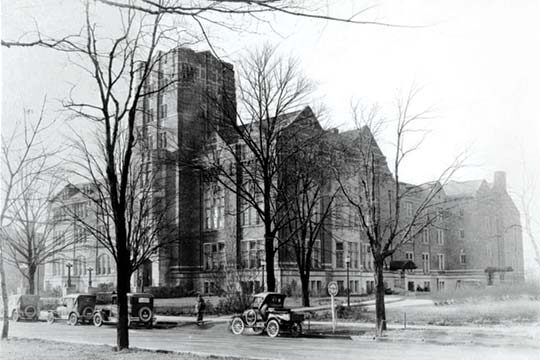


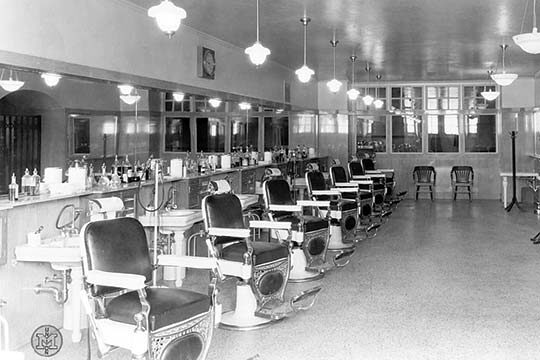
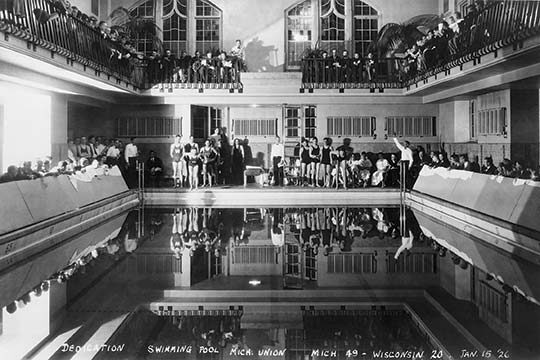



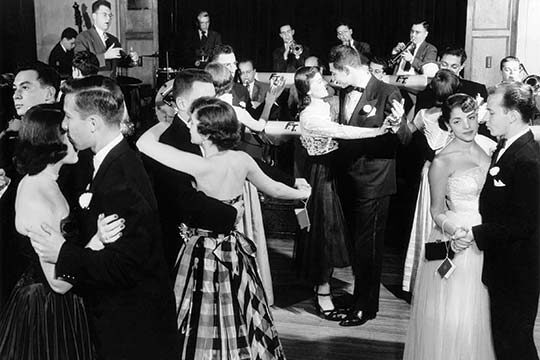


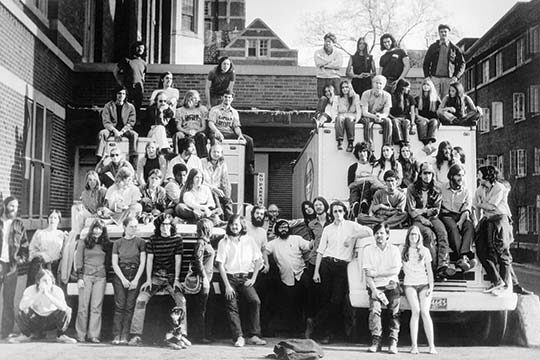

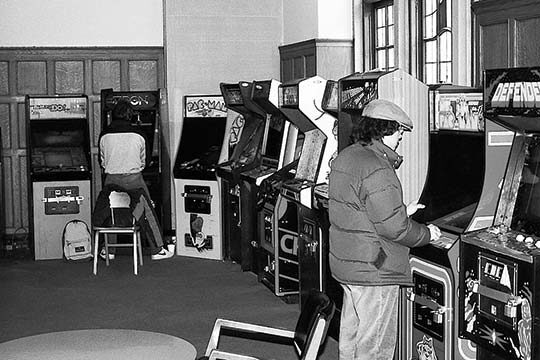

Gurnee Bridgman - '54
If the Union is to be renovated, might there be a place for articles of yore. I have a ‘Life Member’ tag (#6028) which belonged to my father who attended
UM during WW1 time. He survived the flu epidemic of 1918 while at Michigan, and I have pictures of him in his SATC uniform.
Go Blue!!!
Reply
Mary Coles Bennett - B.A. 1996
Love my Michigan Union. I spent a lot of time there as I lived in S. Quad my first and second year, often taking the short walk for coffee and late night snacks. I also worked at the Campus Info Center (CIC) and learned much about the university answering the phones and welcoming guests to campus. It was also convenient to study in the “serious” lounge across the hall after shifts, my blood boiling if anyone sat in “my seat,” especially around exam time. I’m sure the renovation will be stunning and manage to take my breath away, much like the experience every time I visit campus.
Reply